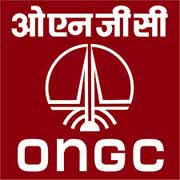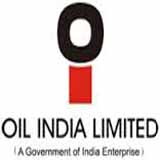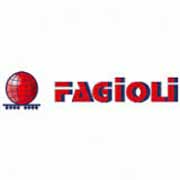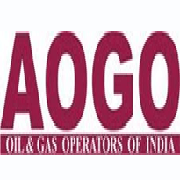-
LNG strategies for the EU and India
India’s gas consumption is lower than the EU’s, but it too, like the EU, relies heavily on imports. With LNG likely to remain a key part of India’s gas supplies in the future, and given recent changes in the global market, what is the future potential of LNG imports for the EU and India? What are the best energy policies for the two regions?
India and the European Union (EU) share a common fate in terms of fossil fuels: both are poor in proved indigenous reserves and need substantial amounts of imports to fill the gap between domestic production and consumption.
This is also true for natural gas. Given recent changes in the global market for liquefied natural gas (LNG)—including flexibility of trade and falling prices—what is the potential of LNG imports in the future for the EU and India? What are the LNG strategies that the two regions can consider?
In the EU, the gap between domestic production in 2014 was around 255 billion cubic meters (bcm). [1] It is mainly covered by imports of piped gas, roughly two-thirds of which come from Russia and Norway. In recent years, LNG accounted for 10% of total gas imports, [2] far below the EU’s 2015 total regasification capacity of 195 billion cubic meters per year (bcma). [3]. Although the EU’s demand for gas peaked in 2010 and has decreased since, the need for additional imports is likely to rise in the future due to more rapidly decreasing domestic production. LNG could play an important role, not only in filling the supply gap, but also in reducing the dependence on imports from Russia. India’s gas consumption, at 50.6 bcm, is much lower than the EU’s, but with production only at 31.7 bcm, [4] it too relies to a large extent on imports.
For natural gas, the supply gap in 2014 amounted to around 19 bcm. [5] In the absence of import pipelines, India exclusively relied on LNG imports to its four existing terminals with a total capacity of around 35 bcma. [6] Although India’s gas demand peaked in 2011, it is still projected to more than double until 2030 due to population and economic growth, and poverty reduction. [7] Without the development of substantial domestic gas fields, this means that the supply gap will increase in the future, raising the question where the gas for India will come from. Given the political difficulties associated with building import pipelines in the region to access Caspian or Iranian gas (through Afghanistan or Pakistan), LNG is likely to remain a key pillar of India’s gas supplies in the future.
The new EU LNG strategy
The EU’s energy policy is based on three pillars: security, competitiveness, and sustainability. Against this background, the European Commission proposed a strategy for LNG and gas storage in February 2016. [8] In terms of security, the strategy aims to diversify import sources and routes, with a particular focus on Eastern Europe. Given that some 95% of existing EU LNG import capacity is in Western Europe, the EU needs to explicitly aim at improving access to LNG particularly in Eastern European countries currently dependent on only one import source.
In terms of competitiveness, the strategy proposes a three-pronged approach. First, it focuses on infrastructure, which is not only needed to complete the EU’s internal gas market but also to improve access to international LNG markets either directly or through other member states. Within this context, the Commission also highlights the role of gas storage in optimising gas infrastructure use and in balancing the system. Second, it urges the completion of the internal gas market in order to send the right price signals for both LNG imports and for required infrastructure investments. And third, the strategy calls for closer cooperation with international partners, both suppliers and major consumers of LNG (including India), in order to remove obstacles in the trading of LNG and to advance towards free, liquid, and transparent global LNG markets.
Regarding sustainability, the EU LNG strategy highlights the potential of LNG in transport, in particular as a means to decarbonise shipping and heavy duty vehicles (such as trucks). It also points to the possibility of using small-scale LNG to replace more polluting fossil fuels in the heat and power sectors, for example in remote or off-grid locations.
Elements of a successful LNG strategy [9]Current global market dynamics could support further diversification towards LNG. Increasing the flexibility of LNG trade, decreasing LNG prices and LNG charter rates, and a reduction in Asia-Pacific import prices could all reinforce the economic viability of a LNG strategy. This is true for the EU as well as for India, and these trends are expected to continue as more LNG enters the market, mainly from new suppliers such as Australia and the U.S.
However, in order to be effective and to avoid mismatches between investments and market reality, a LNG strategy should be part of a broader natural gas and energy strategy. This latter strategy should not only consider issues related the security of gas supplies, but also take into account potential future developments of gas demand—also within the context of Paris Agreement on climate change. A LNG strategy should thus seek to define a space for LNG in the overall demand equation, taking into account the whole energy system and interactions between different energy sectors (for example, between gas and power markets, and gas and the transport sector). This will help avoid inefficient investments, as was the case in Europe in the recent past driving down utilisation rates of EU LNG terminals to 19% in 2015. [10]
As important, the key to a successful LNG strategy is to develop sufficient infrastructure. Low utilisation rates of EU LNG terminals can be explained by decreasing gas demand, but partly also by the fact that there are not enough interconnections between EU countries (for example, between Spain and France). In order to fully exploit the benefits of LNG, a system of interconnectivity requires three essentials: (i) additional infrastructure, either in the form of interconnectors or additional LNG terminals; (ii) a clear regulatory framework avoiding contractual congestion at the interconnection points; and (iii) properly functioning gas hubs to facilitate trade.
In addition, any type of infrastructure to be built should be based on a cost-benefit analysis, taking into account possible lower cost alternatives. For example, LNG Floating Storage and Regasification Units (FSRU) may turn out to be more cost-effective than large LNG terminals or new pipelines. They can add flexibility to the system and can be used for trading if utilisation rates are too low.
Finally, the element of international cooperation between the EU and India should be strengthened with the aim to promote transparent and liquid LNG markets around the world. The European Commission [11] particularly highlights the need to ensure that market participants are not prevented from establishing commercial relationships (for example, by territorial restrictions) and that there are no limitations to the free trade of LNG—both under normal market conditions and in the event of an external shock. Nathan Noel Jersey
Share This



























































































